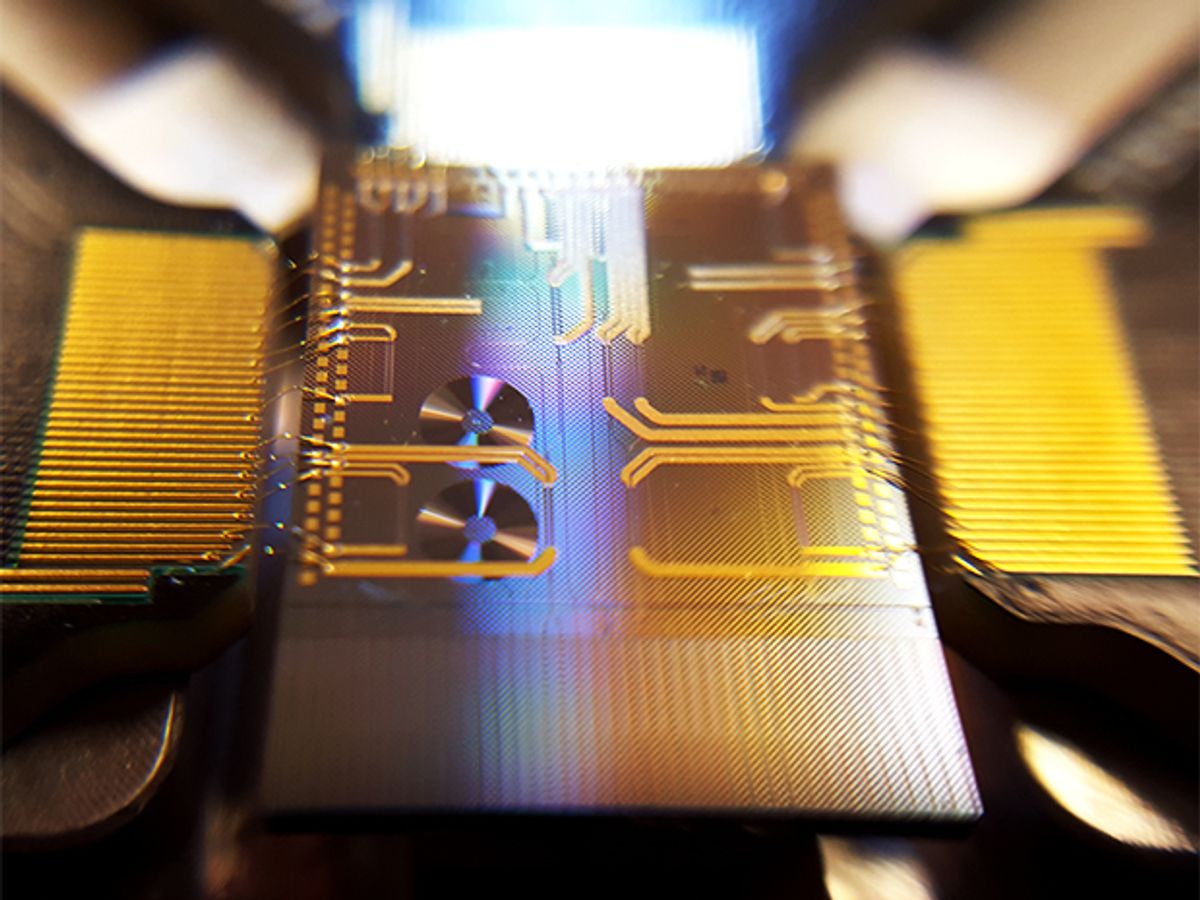Instead of creating quantum computers based on qubits that can each adopt only two possible options, scientists have now developed a microchip that can generate “qudits” that can each assume 10 or more states, potentially opening up a new way to creating incredibly powerful quantum computers, a new study finds.
Classical computers switch transistors either on or off to symbolize data as ones and zeroes. In contrast, quantum computers use quantum bits, or qubits that, because of the bizarre nature of quantum physics, can be in a state of superposition where they simultaneously act as both 1 and 0.
The superpositions that qubits can adopt let them each help perform two calculations at once. If two qubits are quantum-mechanically linked, or entangled, they can help perform four calculations simultaneously; three qubits, eight calculations; and so on. As a result, a quantum computer with 300 qubits could perform more calculations in an instant than there are atoms in the known universe, solving certain problems much faster than classical computers. However, superpositions are extraordinarily fragile, making it difficult to work with multiple qubits.
Most attempts at building practical quantum computers rely on particles that serve as qubits. However, scientists have long known that they could in principle use qudits with more than two states simultaneously. In principle, a quantum computer with two 32-state qudits, for example, would be able to perform as many operations as 10 qubits while skipping the challenges inherent with working with 10 qubits together.

Now scientists have for the first time created a microchip that can generate two entangled qudits each with 10 states, for 100 dimensions total, more than what six entangled qubits could generate. “We have now achieved the compact and easy generation of high-dimensional quantum states,” says study co-lead author Michael Kues, a quantum optics researcher at Canada’s National Institute of Scientific Research, or INRS, its French acronym, in Varennes, Quebec.
The researchers developed a photonic chip fabricated using techniques similar to ones used for integrated circuits. A laser fires pulses of light into a micro-ring resonator, a 270-micrometer-diameter circle etched onto silica glass, which in turn emits entangled pairs of photons. Each photon is in a superposition of 10 possible wavelengths or colors.
“For example, a high-dimensional photon can be red and yellow and green and blue, although the photons used here were in the infrared wavelength range,” Kues says. Specifically, one photon from each pair spanned wavelengths from 1534 to 1550 nanometers, while the other spanned from 1550 to 1566 nanometers.
Using commercial off-the-shelf telecommunications components, the researchers showed they could manipulate these entangled photons. “The basic capabilities they show are really what you need to do universal quantum computation,” says quantum optics researcher Joseph Lukens at Oak Ridge National Laboratory, in Tennessee, who did not take part in this research. “It’s pretty exciting stuff.”
In addition, by sending the entangled photons through a 24.2-kilometer-long optical fiber telecommunications system, the researchers showed that entanglement was preserved over large distances. This could prove useful for nigh-unhackable quantum communications applications, the researchers say.
“What I think is amazing about our system is that it can be created using components that are out on the market, whereas other quantum computer technologies need state-of-the-art cryogenics, state-of-the-art superconductors, state-of-the-art magnets,” says study co-senior author Roberto Morandotti, a physicist at INRS in Varennes. “The fact that we use basic telecommunications components to access and control these states means that a lot of researchers could explore this area as well.”
The scientists noted that current state-of-the-art components could conceivably generate entangled pairs of 96-state qudits, corresponding to more dimensions than 13 qubits. “Conceptually, in principle, I don’t see a limit to the number of states of qudits right now,” Lukens, from Oak Ridge, says. “I do think a 96-by-96-dimensional system is fairly reasonable, and achievable in the near future.”
But he adds that several components of the experiment were not on the microchips, such as the programmable filters and phase modulators, which led to photon loss. Kues says that integrating such components with the rest of the chips and optimizing their micro-ring resonator would help reduce such losses to make their system more practical for use.
“The next big challenge we will have to solve is to use our system for quantum computation and quantum communications applications,” Kues says. “While this will take some additional years, it is the final step required to achieve systems that can outperform classical computers and communications.”
The scientists detailed their findings in the latest issue of the journal Nature.
Charles Q. Choi is a science reporter who contributes regularly to IEEE Spectrum. He has written for Scientific American, The New York Times, Wired, and Science, among others.


